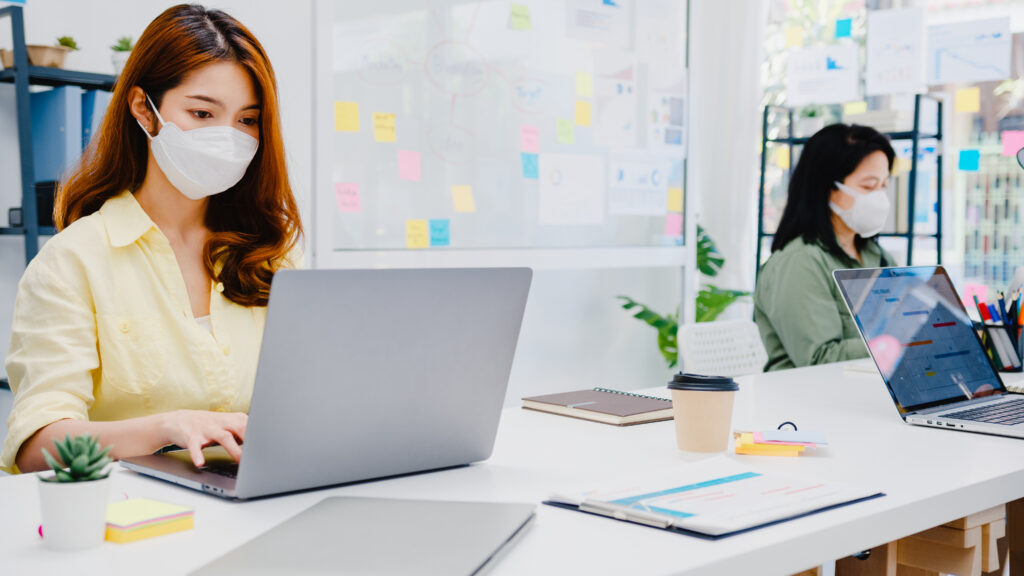Reimagining office after COVID-19 !!
Globally, the COVID-19 epidemic impacted labour markets in 2020. The immediate and frequently severe repercussions were dramatic: Millions of workers were furloughed or lost employment, while others quickly adjusted to working from home as offices closed. Numerous more personnel were judged necessary and continued to work in hospitals and grocery shops, on trash trucks and in warehouses, but under revised methods designed to contain the unique coronavirus. Prior to COVID-19, the most significant disruptions to work occurred as a result of new technology and expanding trade linkages. COVID-19 has elevated the physical dimension of labour to a new level of importance.
Changing opinions toward the office’s function
Prior to the epidemic, it was widely believed that offices were crucial for productivity, culture, and winning the struggle for talent. Businesses competed fiercely for prime office space in major metropolitan areas worldwide, and many emphasised solutions that facilitated cooperation. The war cries were densification, open-office designs, hoteling, and co-working.
Three essential steps toward reimagining employment and the workplace
1. Reconstruct the manner in which work is performed
During lockdowns, companies were forced to adapt in order to continue cooperating and guarantee that critical procedures could be carried out remotely. The majority have merely replicated pre-pandemic processes in distant work environments. This approach has been successful with some companies and procedures, but not with others.
Additionally, organisations should focus on their values and culture, as well as the relationships, behaviours, and rituals that support them. For example, a firm focused on talent development should consider if the tiny moments of mentorship that occur in the office can continue spontaneously in a digital world. Other procedures might be rebuilt and enhanced to ensure that the organisation builds and supports the community and culture it desires.

2. Redesign the workplace to align it with corporate goals
We all have preconceived notions of how a normal workplace should look and feel: a mix of private offices and cubicles, with meeting spaces, pantries, and common facilities. Few offices have been purpose-built to support certain company goals. While offices have evolved in certain ways over the last decade, they may need to be completely reimagined and modified for the post–COVID-19 era.
Organizations might construct workplaces dedicated to the kind of interactions that are impossible to do remotely. If the major goal of an organization’s space is to facilitate collaborative moments rather than individual work, should 80 per cent of the workplace be allocated to collaboration rooms, for example? Should businesses require all workers who work in cubicles and are seldom required to attend group meetings to work from home? If office space is required exclusively for individuals unable to work from home, are working spaces near employees’ homes a preferable solution?
In the future workplace, technology will play a critical role in enabling people to return to office buildings and function safely prior to the widespread availability of vaccination. Organizations will need to manage which employees are permitted to come to work, when they are permitted to enter and take their assigned positions, how frequently the office is cleaned, whether the airflow is adequate, and whether employees remain sufficiently separated as they move through the space.

3. Think outside the box when it comes to resizing the footprint
A transformative approach to workplace redesign will be required. Rather than making incremental changes to the existing footprint, businesses should rethink how much and where space is necessary and how it encourages desired outcomes for collaboration, productivity, culture, and the work experience. This method will also call into question the location of workplaces. Certain corporations will maintain them in major cities, which many believe is necessary to attract young people and foster a feeling of community and enthusiasm. Others may relocate their headquarters from the city to outlying campuses.
SquaREcruit offers end to end recruitment automation software with features like applicant tracking, vendor and client connectivity, AI-based BoTs, in-built Video Conferencing and seamless interview scheduler.
To know more, visit https://squarecruit.com
Future of work and employee engagement !!
Globally, the COVID-19 epidemic impacted labour markets in 2020. The immediate and frequently severe repercussions were dramatic: Millions of workers were furloughed or lost employment, while others quickly adjusted to working from home as offices closed. Numerous more personnel were judged necessary and continued to work in hospitals and grocery shops, on trash trucks and …
Transforming the Recruitment Paradigm !!
Globally, the COVID-19 epidemic impacted labour markets in 2020. The immediate and frequently severe repercussions were dramatic: Millions of workers were furloughed or lost employment, while others quickly adjusted to working from home as offices closed. Numerous more personnel were judged necessary and continued to work in hospitals and grocery shops, on trash trucks and …
